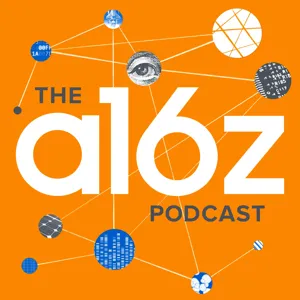Podcast Summary
Understanding Brain Disorders with Living Human Brain Cells: Brain organoids, a new technology, allow us to study human brain development and disorders using living human brain cells in a dish, bringing us closer to a molecular understanding and potential treatments.
Our current understanding of brain disorders is limited due to the lack of access to living human brain tissue. Traditional methods like genetic studies, autopsies, and primates have their limitations. A new technology called brain organoids offers a solution by allowing us to study the human brain, both its development and disorders, with living human brain cells in a dish for the first time. Brain organoids are not mini brains or brains in a dish, but rather 3D cultures of human brain cells. They can help us understand certain aspects of brain disorders, but their understanding is limited. This technology is a significant step forward in understanding brain disorders and has the potential to lead us closer to diagnosing and treating these disorders on a molecular level. Despite our progress in classifying psychiatric disorders, our molecular understanding of them is behind other branches of medicine. The complexity of the brain and the lack of access to living tissue have held us back. Brain organoids offer a new tool to overcome these challenges and bring us closer to a molecular understanding of brain disorders.
Revolutionizing Understanding of Psychiatric Disorders: Recent advancements in cell engineering enable us to create brain-like tissue from individuals' cells, providing new opportunities for studying complex psychiatric disorders and developing targeted therapies.
Understanding psychiatric disorders through traditional methods such as postmortem tissue analysis and animal modeling has its limitations. These methods provide limited information and may not accurately represent the complex genetics and molecular machinery behind these disorders. However, recent advancements in cell engineering allow us to obtain pluripotent stem cells from individuals non-invasively, which can then be instructed to become brain-like tissue in a dish. This opens up new opportunities for studying the molecular basis of psychiatric disorders and developing targeted therapies. It's a mind-blowing concept to take a skin or blood cell, turn it into a brain cell, and then watch development start again in a dish. This approach has the potential to revolutionize our understanding and treatment of complex psychiatric disorders.
3D lab culture for neural cells: 3D lab culture extends neural cell survival and self-organization, potentially advancing neurological research and treatments
Researchers have discovered that when growing neural cells in a lab, keeping them in a three-dimensional culture instead of a flat dish allows them to survive and develop for much longer periods of time. This is significant because it enables the cells to self-organize and progress through different stages of development, similar to how the human brain develops in the womb. The innovation came from realizing that if cells cannot attach to the dish, they form a wall of cells that can fuel each other, allowing for long-term survival. This breakthrough has the potential to advance our understanding of neural development and potentially lead to new treatments for neurological conditions. Essentially, this research is replicating the natural process of development in a lab setting, allowing us to study the complexities of the brain and its evolution in a new way.
Understanding Brain Disorders through Complex Brain Models: Researchers create brain organoids to study brain disorders, revealing sequential cell generation, astrocyte maturation, and surprising discoveries, potentially leading to new treatments.
Researchers are developing complex models of the human brain using three-dimensional cell cultures, often referred to as brain organoids or mini-brains. These models help scientists understand various brain disorders that may not be present in lower animal brains. The term "organoid" is a broad one, encompassing various three-dimensional cell cultures, including those derived from patients' biopsies. While these brain organoids do recapitulate some aspects of brain function, they do not fully replicate the complexity of the human brain. Some brain regions, like the cerebral cortex, are easier to create than others. These models offer valuable insights, such as the sequential generation of cell types and the maturation of astrocytes, which are crucial for neurons to form synapses. The long-term maintenance of these organoids has led to surprising discoveries, like the cells' ability to recognize maturation time points and even the onset of "birth." These findings provide essential information for understanding brain disorders and could potentially lead to new treatments.
The intricate process of brain development from prenatal to postnatal life: Brain development is a gradual process that occurs from prenatal to postnatal life, involving key cellular components like astrocytes and the balance between excitation and inhibition. New insights into previously inaccessible stages of brain development can lead to advancements in understanding neurological disorders and potential treatments.
The development of the human brain is a robust and intricate process that begins well before birth and continues into postnatal life. The maturation of the brain is not solely dependent on the birth itself, but rather on the gradual transition of key cellular components like astrocytes. This process is not sudden but rather a slow progression that can be observed at the gene expression, chromatin, and epigenetic levels. The parallels between this process and the development of seeds into plants are striking. The greatest opportunity for scientific advancement lies in accessing previously inaccessible stages of brain development, which are likely related to various diseases. For instance, the balance between excitation and inhibition in the human cortex is crucial for normal brain function. Disruptions to this balance have been linked to conditions such as epilepsy and autism. Interestingly, inhibitory cortical neurons, which play a crucial role in regulating this balance, are not born in the cortex but rather in another part of the brain called MGE. These neurons then migrate to the cortex, moving in a peculiar way that involves the nucleus being pulled up by a muscle-like contraction. This process occurs every few hours, highlighting the intricacy and precision of brain development. Understanding these mechanisms can provide valuable insights into the causes of neurological disorders and potentially lead to new treatments.
Studying brain development through fusion of excitatory and inhibitory neurons: Researchers study brain development by growing separate organoids for excitatory and inhibitory neurons, then fusing and observing their migration and synapse formation, providing insights into neurological disorders like Timothy Syndrome.
The development of the brain involves the movement and fusion of different types of neurons, which is a complex process that continues into the second year of life in humans. This process, called neurogenesis, is crucial for the proper functioning of the brain, and disruptions in it have been linked to conditions like autism and epilepsy. Researchers have developed a model in a lab dish to study this process, where they grow separate organoids for excitatory and inhibitory neurons, and then fuse them together. The inhibitory neurons then migrate towards the other side and start making synapses with excitatory neurons, leading to energy transmission and the formation of complex neural structures. Interestingly, a rare condition called Timothy Syndrome, caused by a single gene mutation, affects the migration of neurons, providing insight into the importance of this process in brain development and potential links to neurological disorders.
Learning from lab-grown brain organoids despite limitations: Understanding molecular mechanisms behind brain development timeline could potentially lead to ways to accelerate or decelerate it. Brain organoids recapitulate human brain's slower development process, providing insights into neoteny and social learning.
Lab-grown brain organoids offer valuable insights into the intricacies of brain development, but they come with limitations such as long culture times. However, these limitations also present opportunities for further research, as understanding the molecular mechanisms behind the developmental timeline could potentially lead to ways to accelerate or decelerate it. The human brain's slower development, a result of neoteny, is believed to allow for more extensive social learning. Brain organoids recapitulate this process in vitro, and figuring out the molecular mechanisms behind it could unlock new levels of understanding. It's important to remember that these models are not perfect replicas of the brain but rather useful tools to answer specific questions related to brain development and diseases.
Modeling neurodevelopmental disorders with 3D brain organoids: 3D brain organoids can help study neurodevelopmental disorders at the molecular level, despite limitations, and pave the way for defining these disorders biologically, ultimately leading to new treatments.
While the current 3D brain organoid models have limitations, such as the absence of vascularization and certain immune cells, they can still be useful in studying neurodevelopmental disorders. These disorders, which arise due to abnormal brain development, can be effectively modeled at the molecular level. Although it may be more challenging to study neurodegenerative disorders or disorders with later onset, such as Alzheimer's disease, there is potential for studying genetic forms of complex disorders like schizophrenia. The ultimate goal is to define these disorders biologically, moving away from their behavioral definitions, and to accept that they are groups of disorders rather than single diseases. The future of this field lies in engineering and refining these models, building upon past successes, and pushing the boundaries of what is possible. This engineering approach shares similarities with the process of designing and building complex systems, making it a promising avenue for understanding and treating various brain disorders.
Reverse engineering biology for disease modeling: Advancements in biology include creating organoids, but ethical concerns arise from potential transplantations and sensory input in animals
The field of biology, particularly in relation to disease modeling and engineering, has shifted towards reverse engineering and assembling "working blocks" to understand complex systems. This approach has led to significant advancements, including the creation of organoids that can form connections and small circuits. However, these structures are not miniature versions of the human brain and lack sensory experience, which is crucial for brain development. Ethical concerns mainly arise from potential transplantations into animals, where the organoids may receive sensory input and participate in circuit functions. As we continue to develop more advanced models to better understand psychiatric disorders, it's important to consider the ethical implications and ensure that these models closely resemble the human brain.
Exploring the potential of brain chips: Scientific and ethical questions: Brain chips made of living neurons raise scientific and ethical questions about their potential applications, limitations, and ethical implications, including consciousness, human uniqueness, and implications for psychiatry and molecular psychiatry.
The development of brain chips, made up of living neurons, raises both scientific and ethical questions. These questions revolve around the potential applications and limitations of this technology, as well as the legal and ethical implications of creating biological computing devices. The long-term implications of this technology are vast, with potential applications in scientific discovery, disease treatment, and even creating more complex networks that could be used as computing devices. However, as we move towards building more complex circuits and potentially even transplanting these chips into humans, ethical concerns around consciousness, human uniqueness, and the implications for psychiatry and molecular psychiatry will need to be addressed. The next steps in this field include applying the technology more broadly and understanding the human brain's unique biology and computing capabilities. Ultimately, this technology could lead to a deeper understanding of consciousness and the nature of the human brain. It's an exciting time as we explore the potential of this new tool and the possibilities it holds for both scientific discovery and ethical dilemmas.
Understanding the brain and intelligence at an exciting intersection: Neuroscience research connections will have far-reaching implications for education, technology, and healthcare
Neuroscience is at an exciting juncture, sitting at the intersection of understanding the brain, intelligence, learning, and both macro and micro scales. This intersection holds significant potential for various disciplines in the years to come. The connections being made and discovered in neuroscience research will likely have far-reaching implications for fields such as education, technology, and healthcare. As we continue to explore the complexities of the brain and intelligence, the insights gained will undoubtedly lead to new discoveries and innovations. Thank you for tuning into the a16z podcast, and for having me on the show to discuss this fascinating topic.





